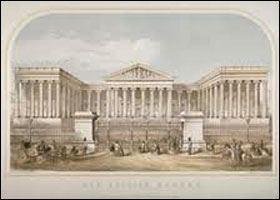![]()
The contents on this page remain on our website for informational purposes only.
Content on this page will not be reviewed or updated.
 |
|
 |
|
|
||||
|
Aspley School
|
||||
|
||||
|
In the recent Citizen, it was interesting to read the views on the dismal, but predictable, legacy of ‘progressive’ teaching methods, and, as regards spelling and grammar, it should have been obvious, even to ‘trendies,’ that conventions and rules are not there to be dictatorial, but to provide a consistency and ease of understanding for the benefit of all.
In fact they would no doubt have also liked to tear up the Highway Code, to promote a similar chaos and anarchy on the roads. And so to proper schools, and in the words of one ex pupil and head boy ‘Rugby was the only school in England, with the exception of Eton and Harrow, which could compete with Aspley.’ Founded about 1720 the school, in Aspley Guise, was built in the grounds of Guise House, but at one time appears to have been none too healthy a place, since the master wrote to Richard How, of the village, asking if he could recommend any additional pupils, ‘for the smallpox has caused some vacancies.’ However, having once been an errand boy at the school, in 1778 William Wright took over as the master, and the outlook soon improved, for ‘sickly half nourished London boys nearly doubled their weight in six months,’ with ‘fever scarcely ever known.’ William died in December 1807, and is duly commemorated in the parish church. Following his death the Reverend Richard Pain took over, but, facing competition from other educational establishments, he closed the ‘Classical Academy’ in 1844/5. Nevertheless, he remained at Guise House, and, building a wall down the middle of the property, sold the dormitory, offices, school rooms, and playground to a builder, George Farr Arnold, for £950. (This would later become Powage Press.) Of all the Aspley pupils perhaps the most renowned was Robert Smirke, (1781-1867), who became a celebrated architect. In fact his work included much of the former Mint on Tower Hill, a rebuilding of Covent Garden theatre (which tragically burnt down in 1856) and the restoration of York Minster. He is best remembered, however, for his involvement with the British Museum, and more especially the construction, between 1823 and 1828, of the oldest part of the building, the King’s Library, which was designed specifically to house an enormous collection of books, given to the Museum by George IV. As for modern day education, fortunately I’m too long in the tooth to have experienced the antics of the ‘jus spel it ow u fink it sowndes’ brigade. Which is just as well, or these articles would no doubt be only intelligible to those well versed in medieval English. |
||||
|
|
||||
|
|
||||


